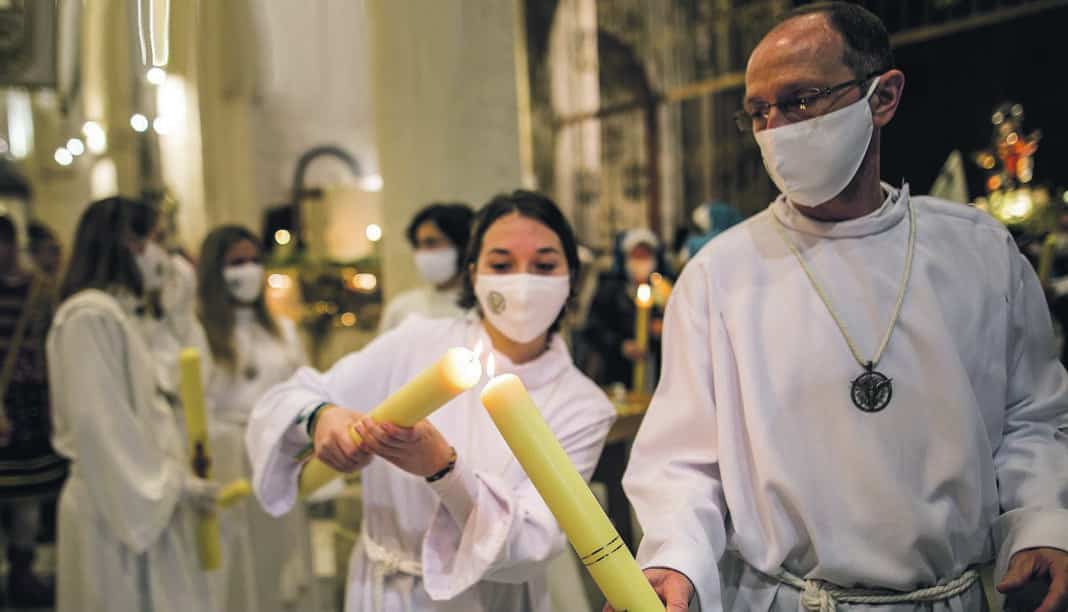The city finally put an end to its Holy Week with a crowded early morning procession on Sunday, that succeeded the Holy Burial procession, held during the previous evening, and as tradition dictates, the people of Orihuela went from mourning the death of Christ to announcing his resurrection, with joy and jubilation that was noted with the beating of the drums.
On the most important day in the church’s calendar the image of ‘El Salvador Resurrected’ had returned to the streets of the city along with hundreds of onlookers who came out at dawn to pay their respects as they watched over the procession, which included the release of balloons and doves.
There were also the traditional hallelujahs that the people of Orihuela sang out loud after the meeting between the Risen Saviour and the ‘Blessed Virgin of Sorrows,’ which served to commemorate the moment in which the mother of Christ meets again with her son, afterhe has returned to life.
The release of the white dove also took place, representing the holy spirit.
It took off across city between the beating of drums and the applause of the public, representing everyone’s joy, after which there were fireworks, and balloons were released by the children to celebrate the Resurrection of Christ in Orihuela.
The fact that the resurrection was celebrated at dawn did not prevent dozens of children from joining the traditional drum dance organised by the Brotherhood of the Resurrection.
After this outpouring of happiness for the return to life of Christ, the usual move of the many biblical models back to their churches was carried out, so the statue of the Risen Saviour returned to the Cathedral, while, the Blessed Virgin of Sorrows was moved back to the Monastery of San Juan de la Penitencia.
These were the final preocessions of Holy Week in Orihuela, a festival that continues to attract many thusands of visitors to the city as it continues to be declared an Activity of International Tourist Interest.





